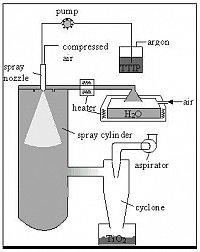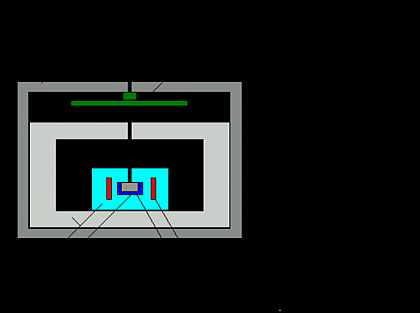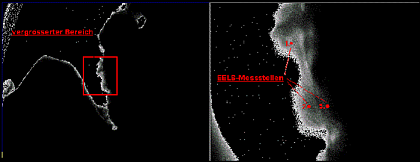Research interests
Forschung_Abicht_ch-ano.pdf
(282.5 KB) vom 14.05.2012
Solid state chemistry / Materials Science
- Synthesis and characterization of pre-ceramic powders by various methods on the base of BaTiO3 (solid state reactions, wet chemical routes, microwave assisted solvothermical synthesis)
- Synthesis of core-shell structured BaTiO3 precursors
- Surface modification of ceramic powders by leaching and powder coating
- Structure-property relations of functional ceramics
- Microwave sintering of BaTiO3-based ceramics
- Synthesis, characterization, and application of solid solutions oft he type
Ba(Ti,Sn)O3 - Anion substitution (O/N exchange) of perovskites (BaTiO3)
Synthesis of pre-ceramic powders by various methods:
- classical mixed oxide method,
- wet chemical techniques,
- spray hydrolysis (newly developed) and
- extensive characterization of the material obtained.

Fig. 1: Scheme of the spray hydrolysis equipment
Please click on the picture for enlargement
Modification of the surface BaTiO3 starting powders by means of coating with preformed secondary phases (TiO2, SiO2, Ba6Ti17O40, CaTiSiO5, ...). This includes investigations of the reactivity of secondary phases against barium titanate. Another feature with a view to surface modification is a leaching process.

Fig. 2: TEM bright field image of coated BaTiO3 by means of spray hydrolysis
Please click on the picture for enlargement
Application of microwave power for the synthesis of BaTiO3 powder as well as the sintering of barium titanate ceramics. A special interest in this field is directed to a secondary phase promoted microwave heating in the sense of microchemical designing.

Fig. 3: Optimized microwave oven for homogeneous sintering of BaTiO3 ceramics
Please click on the picture for enlargement
Development and characterization of gradient materials (FGM) with gradients of chemical composition or grain size resulting in gradients of certain (functional) properties.

Fig. 4: Different gradients by means of pure microwave heating (left) and by pure secondary heating (right).
Please click on the picture for enlargement
Last update: June 2012




